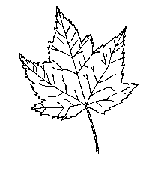Hi, everyone! Happy New Year! Apologies for not getting this out to you last week. We had a major power outage during the time I normally update the blog! Anyway, here's what we have been working on:
4th Grade: The fourth graders have been reviewing food webs and studying the different types of elements that make up an ecosystem. We played a game called "Who am I?" where students had to guess what part of the ecosystem they were (written on a card on their backs) by asking others yes and no questions. Key questions:
- What did you have on your card? Was it a consumer, producer, decomposer or abiotic factor?
- What provides energy to most food webs? (Producers, usually plants or, in aquatic ecosystems, phytoplankton)
5th Grade: We've just wrapped up our human body systems and have started looking at the ways plants get energy, water and gas to their cells. This week, we've been experimenting on celery. We set up an experiment to see which type of celery uses more water - celery with leaves or celery without leaves. Students also got to put red food coloring in the water so that we could track the flow of water up the stem and into the leaves. Here are some key questions:
- What do plant and animal cells have in common? (All need food, water, gas exchange and waste disposal)
- How do vascular plants transport water? (There are tubes in vascular plants called xylem that bring water from the bottom up into the leaves. These tubes turned red in our celery experiment due to the red water we used.)
- What would be analogous in the human body to xylem in plants? (Probably our circulatory system of veins and arteries, though we obviously have a heart that pumps it around, while plants depend on evaporation out of the leaves to draw water upwards.)
- What did you find from your experiment? (Celery with leaves used more water. This is because the evaporation out of the leaves "pulls" water molecules from below. )
Here's a nice cross section photo of what we worked on. This photo also includes some celery where blue food coloring was used. We only used red, but using other colors would be a great at-home project!





